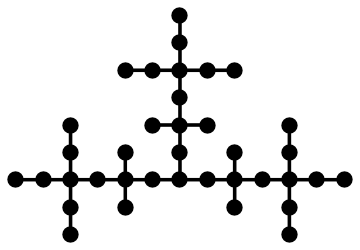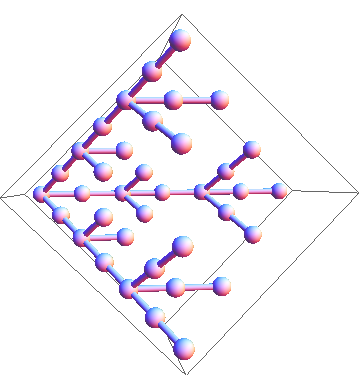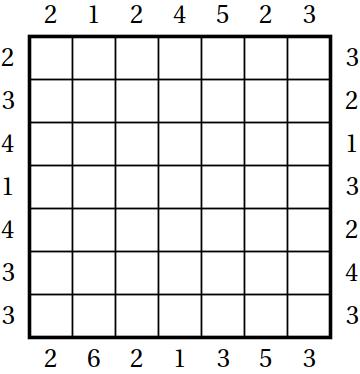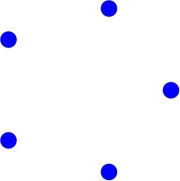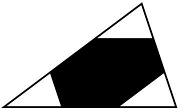Without using a calculator, can you tell how much 752 is? If you are reading my blog, with high probability you know that it is 5625. The last two digits of the square of a number ending in 5 are always 25. So we only need to figure out the first two digits. The first two digits equals 7 times 8, or 56, which is the first digit of the original number (7) multiplied by the next number (8).
I was good at mental arithmetic and saved myself a lot of money back in the Soviet Union. Every time I shopped I calculated all the charges as I stood at the cash register. I knew exactly how much to pay, which saved me from cheating cashiers. To simplify my practice, the shelves were empty, so I was never buying too many items.
When I moved to the US, the situation changed. Salespeople are not trying to cheat, not to mention that they use automatic cash registers. In addition, the US sales taxes are confusing. I remember how I bought three identical chocolate bars and the total was not divisible by 3. So I completely dropped my at-the-cash-registers mental training.
Being able to calculate fast was somewhat useful many years ago. But now there is a calculator on every phone.
John H. Conway is a master of mental calculations. He even invented an algorithm to calculate the day of the week for any day. He taught it to me, and I too can easily calculate that July 29 of 1926 was Thursday. This is not useful any more. If I google “what day of the week is July 29, 1926,” the first line in big letters says Thursday.
One day a long time ago I was watching a TV show of a guy performing mental tricks: remembering large numbers, multiplying large numbers, and so on. At the end, to a grand fanfare, he showed his crowned trick. A member from the audience was to write down a 2-digit number, and to raise it to the fifth power using a calculator. The mental guy, once he is told what the fifth power was, struggled with great concentration and announced the original number.
I was so underwhelmed. Anyone knows that the last digit of a number and its fifth power are the same. So he only needs to guess the first digit, which can easily be estimated by the size of the fifth power.
I found the description of this trick online. They recommend memorizing the fifth powers of the numbers from 1 to 9. After that, you do the following. First, listen to the number. Next, the last digit of the number you hear is the same as the last digit of the original number. To figure out the first digit of the original number, remove the last 5 digits of the number you hear. Finally, determine between which fifth powers it fits. This makes sense. Or, you could be lazy and remember only meaningful digits. For example, 395=90,224,199, and 405=102,400,000. So if the number is below 100,000,000, then the first digit is less than 4.
You do not have to remember the complete fifth powers of every digit. You just need to remember significant ranges. Here they are:
| first digit |
range |
| 1 |
between 100,000 and 3,000,000 |
| 2 |
between 3,000,000 and 24,000,000 |
| 3 |
between 24,000,000, 100,000,000 |
| 4 |
between 100,000,000 and 300,000,000 |
| 5 |
between 300,000,000 and 750,000,000 |
| 6 |
between 750,000,000 and 1,600,000,000 |
| 7 |
between 1,600,000,000 and 3,200,000,000 |
| 8 |
between 3,200,000,000, and 5,900,000,000 |
| 9 |
above 5,900,000,000 |
Besides, for this trick the guy needed to guess one out of one hundred number. He had a phenomenal memory, so he could easily have remembered one hundred fifth powers. Actually he doesn’t need to remember all the numbers, only the differentiated features. On this note, there is a cool thing you can do. You can guess the number before the whole fifth power is announced. One caveat: a 1-digit number x and 10x when taken to the fifth power, both begin with the same long string of digits. So we can advise the audience not to suggest a 1-digit number or a number divisible by 10, as that is too easy (without telling the real reason).
Now we can match a start of the fifth power to its fifth root. Three first digits are almost always enough. Here is the list of starting digits and their match: (104,16), (107,64), (115,41), (116,65), (118,26), (12,66), (130,42), (135,67), (141,17), (143,27), (145,68), (147,43), (156,69), (161,11), (164,44), (17,28), (180,71), (184,45), (188,18), (19,72), (2051,29), (2059,46), (207,73), (221,74), (229,47), (23,75), (247,19), (248,12), (253,76), (254,48), (270,77), (282,49), (286,31), (288,78), (30,79), (33,32), (345,51), (348,81), (370,82), (371,13), (38,52), (391,33), (393,83), (40,21), (4181,53), (4182,84), (44,85), (454,34), (459,54), (470,86), (498,87), (50,55), (51,22), (525,35), (527,88), (53,14), (550,56), (558,89), (601,57), (604,36), (62,91), (64,23), (656,58), (659,92), (693,37), (695,93), (71,59), (73,94), (75,15), (77,95), (792,38), (796,24), (81,96), (84,61), (85,97), (902,39), (903,98), (91,62), (95,99), (97,25), (99,63).
Or, you can come to the mental guy’s performance and beat him by shouting out the correct answer before he can even finish receiving the last digit. This would be cool and cruel at the same time.
Share:





